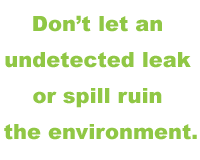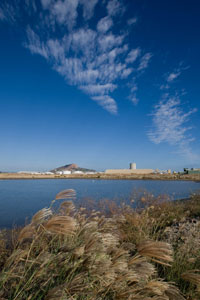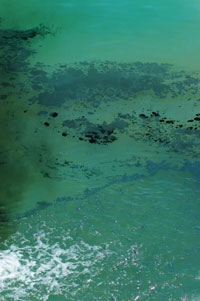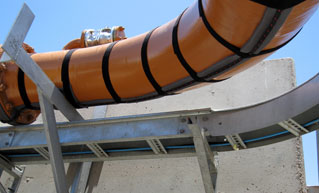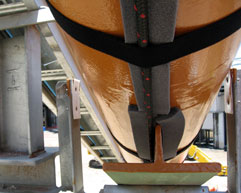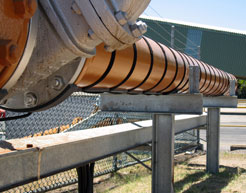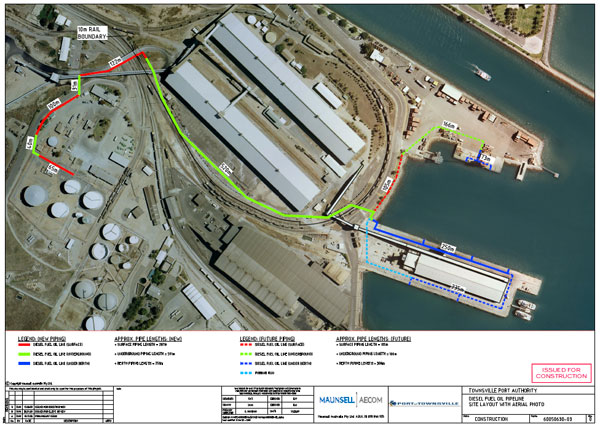High standards for environmental policy, management and monitoring lead to TraceTek® engineers designing a complete and integrated leak detection solution to monitor the diesel transfer piping in the Port of Townsville, Queensland, Australia.
The Port of Townsville is unique by comparison to many of the world’s ports in that it is located within the Great Barrier Reef World Legacy Area, adjacent to the Great Barrier Reef Marine Park. The Port is situated in close proximity to residential areas in a growing city and sensitive natural habitat including the seagrass beds, coral reefs, mangrove forests and protected area of the dugong. Located in tropical North Queensland the city is subject to an average rainfall of 955mm in the wet season, from December to April, that also pose environmental challenges for containment of diesel leaks.
Townsville Port Authority embraces a responsible and proactive approach to environmental protection by ensuring sustainable environmental management as a core component of their operation and Port development.
THE RISK
At small oil ports around the world, tankers often unload their cargo of crude oil or refined fuels into small pipe systems that traverse or encroach on ecologically sensitive areas. Where operation is intermittent and pipeline lengths relatively short, traditional SCADA-based leak detection systems which rely on predictable constant flow rates are rendered ineffective. In fact even large leaks during off-loading may go completely undetected, compromising operator’s environmental responsibility and devastating the local ecology.
TOWNSVILLE WHARF SIDE DIESEL FUEL PIPING PRESENTS A VARIETY OF LEAK DETECTION CHALLENGES
The diesel transfer piping system at the Port of Townsville is a classic mix of different pipe installation modes. Portions of the 1km pipeline are above ground on trestle road crossings or low level pipe stands, buried underground, and under berth on the wharf.
The challenge for the TraceTek® leak detection team was to design a complete, integrated system solution that can effectively monitor the fuel piping regardless of the style of installation and transitions from above ground, to below ground, to wharf. A customized integrated system solution for all three modes of pipe installation had not been offered on the same project before in Australia. The diesel transfer piping system comprises approximately 556 metres of below ground pipe, 310 metres of above ground pipe and 275m of double contained pipe on the wharf.
THE DESIGN
Sustainability is a core ethic of AECOM (formerly Maunsell). With the large number of stakeholders affected by this pipeline, the TraceTek leak detection system was extremely important in minimizing risk to the environment with this design.
THE SOLUTION
For critical environmentally sensitive areas the key is quick detection and accurate location at the source of the leak. The TraceTek® sensor cable and monitoring system lets you do that because it offers, reliable and accurate fluid leak detection that directly pinpoints the source of the leak, to help you take decisive action long before the spill can create damage.
The entire length of the TraceTek® TT5000 sensor cable, with its conductive polymer technology, is sensitive to liquid hydrocarbons such as gasoline, jet fuel diesel and fuel oils. Once installed, with as many individual 1 km circuits as necessary, the system can monitor the entire pipeline detecting and pinpointing the location of a leak to +/- 1 metre.
BELOW GROUND PIPING
For the buried portion of the pipeline, a slotted PVC conduit is placed in the pipe trench on the same layer of sand that the single wall fuel pipeline rests upon. After the heavy pipeline work is completed the TT5000 sensor cable with an over braid of polyethylene rope is drawn into the conduit system while it is being assembled prior to burial.
ABOVE GROUND PIPING
The TT5000 sensor cable with an external black polyester rope layer is strapped to the bottom side of the above ground single wall fuel pipeline. The densely braided polyester yarn exterior covering provides a very effective ultra violet (UV) shield protection for the sensor cable within. Installation provides allowances for supports, mechanical abrasion and thermal expansion of the fuel pipe.
WHARF UNDER BERTH
The most common solution for long runs of double wall / containment pipeline under a large wharf is to install the TT5000 sensor cable into and along the interstitial space between the inner and outer pipe. As the minimum clearance space was not available, due to specification, an alternative solution of low point detection was proposed. This could be facilitated by installing a fast fuel sensor probe at the low point as the pipeline on the wharf slopped back to the shoreline. Double wall pipe system is used as an effective means of leak containment for an over-the-water installation.
MONITORING
All of the sensor cables and fast fuel probe are monitored from a single alarm panel with the installation providing an intrinsically safe monitoring circuit rated for the appropriate hazardous area classification. The alarm panel provides capacity for up to 127 circuits, far exceeding any plans for the future pipeline expansion. The TraceTek® system not only provides early detection but leads you to the leak, by providing a digital readout of the distance to the leak, so you can locate the source and solve the problem.



